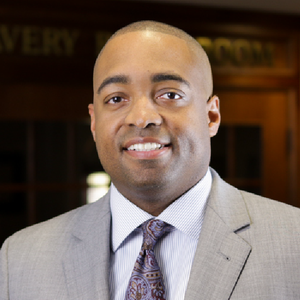
Education
Jonathan Small | August 25, 2023
‘Wraparound’ services a flop
Jonathan Small
For several years officials have blamed poor student outcomes in public schools on outside factors, such as poverty. Their proposed solution: “wraparound” services that largely duplicate in schools the welfare programs normally provided through a department of human services.
Well, that theory has now been put to the test—and failed.
When basketball star LeBron James opened the I Promise School in Akron, Ohio, it was met with much fanfare. The public school would serve low-performing students, many of whom had learning challenges or experienced trauma. And the school would not only provide academics, but also “wraparound” services to address students’ physical and emotional needs outside school.
The school touted things such as “trauma-informed support,” a food pantry for students’ families, GED and job search support for parents, rent-free transitional housing for student families, free bicycles and Chromebooks for students, teacher access to psychological services, mental-health support, legal aid, and more.
Supporters lavished the school with praise. In August 2018, Education Week bluntly wrote, “The opening of LeBron James’ public school in Akron, Ohio, has lots of people in education circles swooning.”
So, what were the results? Not great.
Students at the I Promise School typically enter two or more years behind grade level. Normally, such students can make rapid and dramatic gains in learning when in the right environment, as seen at countless charter schools and private schools around the country. But that didn’t happen at the I Promise School.
Students who were in third grade the year the I Promise School opened are now starting eighth grade. For each of the last three school years, none of those students have scored “proficient” in Ohio’s math proficiency test.
Compared to their (also academically lagging) peers in regular Akron schools, I Promise School students are doing only slightly better in reading and English and worse in math. Put simply, extensive wraparound services have consumed dollars, but they haven’t significantly improved academic outcomes.
Oklahoma officials should take note, particularly as some school officials are now insisting our state should pursue a similar strategy by, for instance, dramatically increasing the number of school counselors and other non-teaching staff in public schools.
In reality, Oklahoma is already far down this path—with similar results to the I Promise School.
Benjamin Scafidi, professor of economics at Kennesaw State University, found that between fiscal years 1993 and 2022 enrollment in Oklahoma public schools increased by 5.8 percent while public school staff increased 19.9 percent.
“The tremendous K-12 public school staffing surge has presented taxpayers with a large opportunity cost,” Scafidi writes. “Specifically, as I have shown in previous research, it appears that the public school staffing surge has crowded out increases in teacher salaries, as the increased funding given to public school districts in recent decades has largely been devoted to increased staffing. This increase in staffing, above what was needed to accommodate student enrollment growth, means the inflation-adjusted increases in per student funding given to public schools could not be devoted to increases in teacher salaries on an inflation-adjusted basis.”
As Oklahoma spent more money on schools during that time, academic results have not surged along with school staffing.
As common sense would suggest, academic outcomes improve more when you focus on the classroom than when you divert attention and resources elsewhere.
Photo Credit: Keith Allison from Hanover, MD, USA, CC BY-SA 2.0, via Wikimedia Commons

Jonathan Small
President
Jonathan Small, C.P.A., serves as President and joined the staff in December of 2010. Previously, Jonathan served as a budget analyst for the Oklahoma Office of State Finance, as a fiscal policy analyst and research analyst for the Oklahoma House of Representatives, and as director of government affairs for the Oklahoma Insurance Department. Small’s work includes co-authoring “Economics 101” with Dr. Arthur Laffer and Dr. Wayne Winegarden, and his policy expertise has been referenced by The Oklahoman, the Tulsa World, National Review, the L.A. Times, The Hill, the Wall Street Journal and the Huffington Post. His weekly column “Free Market Friday” is published by the Journal Record and syndicated in 27 markets. A recipient of the American Legislative Exchange Council’s prestigious Private Sector Member of the Year award, Small is nationally recognized for his work to promote free markets, limited government and innovative public policy reforms. Jonathan holds a B.A. in Accounting from the University of Central Oklahoma and is a Certified Public Accountant.